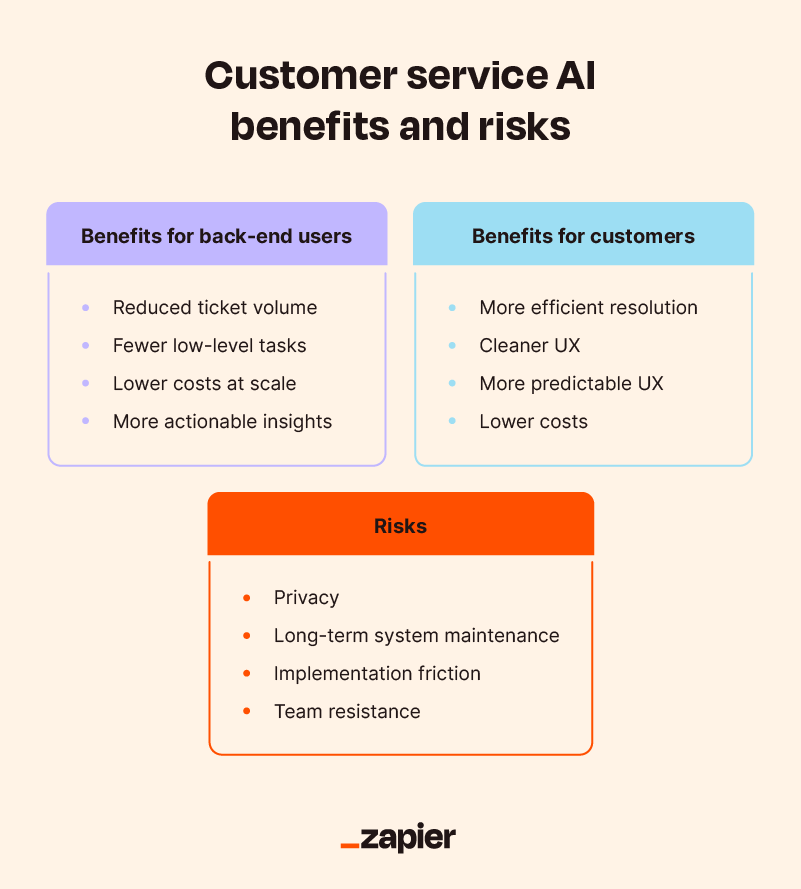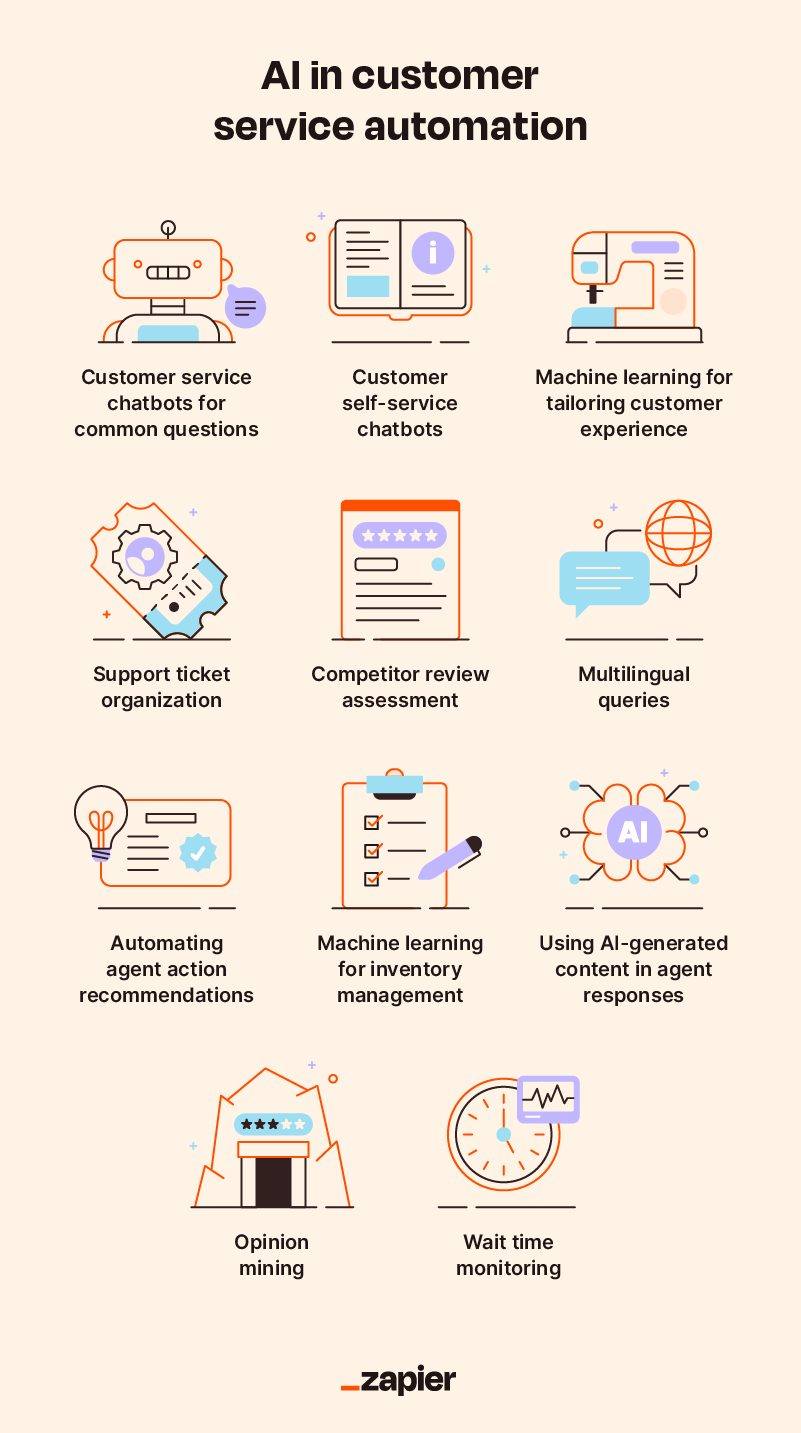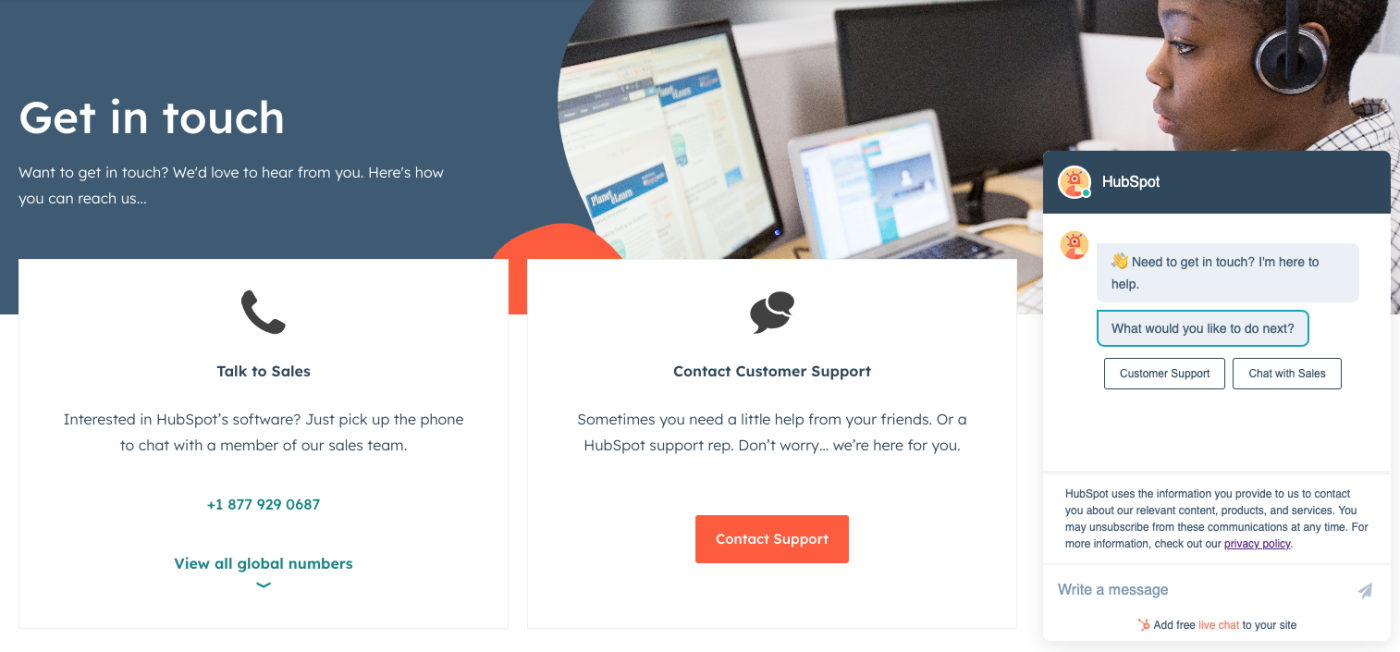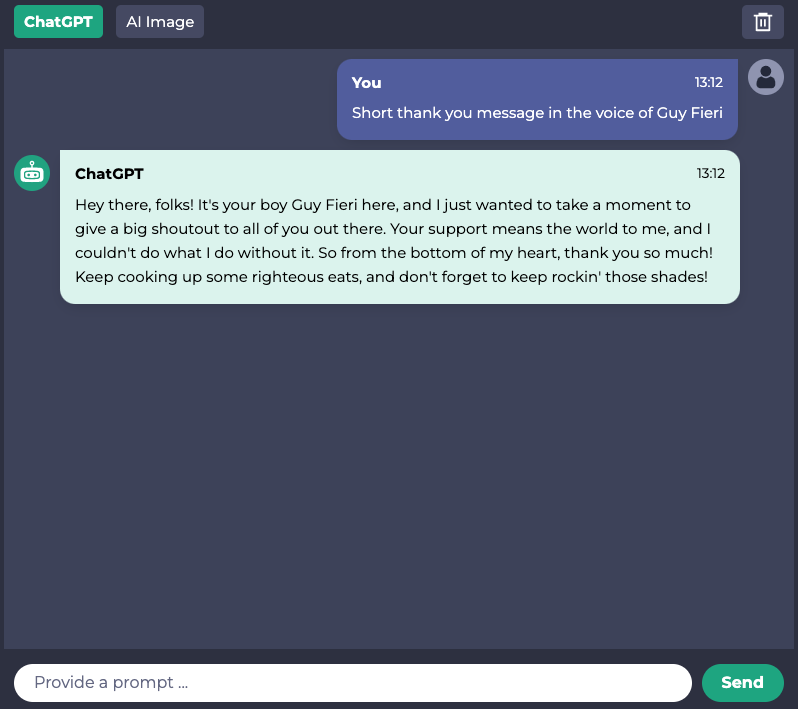The state of New Mexico is blessed with many splendors, including the amazing regional fast food chain Blake's Lotaburger. I don't know who Blake is, and I also don't get burgers there, but what I do get is a breakfast burrito served Christmas style—with both red and green chile.
With a small menu featuring locally farmed Hatch chiles, I imagine Blake's still does things pretty much the same as they did when they opened in 1952—except for one thing.
The last time I called to place an order before a road trip, I was greeted by first name by a disarmingly human computerized voice that recognized my number and suggested the exact order I planned to make.
I'll admit I remain a little freaked out by this voice. But the compulsively antisocial part of my psyche that makes me not want to make phone calls also appreciates these shifts to using AI in customer service. Freaky or not, artificial intelligence is becoming as common as it is rapidly changing—here's how companies like Blake's are putting it to use.
Table of contents:
What is customer service AI?
AI can be used in customer service to help streamline workflows for agents while improving experiences for the customers themselves. Some of the more common uses of AI in this space are support ticket sorters and chatbots (like my favorite regional fast food chain's personalized order-taker), but that's really just the tip of the breakfast burrito.
The number of ways to implement artificial intelligence in contact centers, within eCommerce platforms, and as part of service-adjacent sales phases is practically limitless. As a whole, the AI industry is growing quickly, and implementation in the customer service space is following suit. By the time you read this, I'll probably already be working on a piece called "AI in customer service: Even more ways to automate support that I didn't know existed a few weeks ago."
Here are some ways businesses can use AI in their customer service ecosystems.
Benefits of AI in customer service

Customer service AI should serve both the customer and the company employing it. Here's what each party can gain from AI tools and practices like the ones above.
For agents
From customer service agents to the enterprises employing them, here's what users on the back end can gain from AI.
Reduced ticket volume: Using AI to help customers help themselves means fewer tickets for agents.
Fewer low-level tasks: Since AI can help customers resolve basic issues without contacting agents directly, fewer of those repetitive tasks make it to agents. That frees them up to focus on more complex issues and higher-value tasks.
Lower costs at scale: Companies can keep expenses down by relying on software to manage growing customer needs as they grow.
More actionable insights: Machine learning analysis can synthesize massive amounts of data to forecast needs, suggest actions, maintain inventory, and much more.
For customers
Ideally, customers may not even know they're using AI. Here's how it can benefit them, whether they can detect it or not.
More efficient resolution: When it comes to customer service, customers really only care about getting their issues resolved fast. If a chatbot can direct them to a solution in less time than it takes to connect to an agent, that's a win for them.
Cleaner UX: Effectively implemented AI can help support teams streamline front-end processes and address common user issues before they become issues.
More predictable UX: Customers have established paths for issue resolution and can choose the resolution methods they want with accurate ideas of response times.
Lower costs: By keeping overhead low, sellers can keep price points down for their customers.
How AI is used in customer service
Contrary to what catastrophizing media and dystopian sci-fi will have you believe, AI isn't a one-off replacement for most customer service outfits. (If there is a sci-fi subgenre dedicated to AI customer service operations, please tell me.)
Most companies with strong customer support situations use AI to supplement their human agents, helping them save time, cut out low-level tasks, and solve problems more easily. Here are a few general ways they use AI to do that:
Customer insights: AI can be used to help customer support teams gain insights into massive amounts of customer data, helping them find actionable takeaways from both company-wide and industry-wide trends.
Customer self-support: Some AI solutions are geared toward helping customers find the answers they need themselves. This cuts down on response time for customers while cutting out repetitive queries for agents.
Agent support: Agents can use AI solutions to help them keep the supporting resources, communication channels, and data they need at the ready.
Process improvement: When integrated into workflows, AI can cut out friction points and add smart automations that move customer support responsibilities moving more efficiently.
Want to see it in action? Learn how Learn It Live reduced support tickets 40% with an AI-powered chatbot and how the nation's largest transit ad company transformed its customer support with AI.
11 examples of AI in customer service
Still not sure what AI can do for your customer support agents, campaigns, and workflows? Here are some of my favorite customer service AI use cases.

1. Customer service chatbots for common questions

The humble chatbot is possibly the most common form of customer service AI, or at least the one the average customer probably encounters most often. When used effectively, chatbots don't simply replace human support so much as they create a buffer for agents. Chatbots can answer common questions with canned responses, or they can crawl existing sources like manuals, webpages, or even previous interactions.
If queries like these comprise half a company's total customer support request tickets, that's a huge time savings for its agents. For unresolved questions, chatbots can connect customers to available agents, helping ensure that those agents are only getting the more complex or higher-value tickets.
You can build your own AI chatbot for free in a matter of minutes using Zapier Chatbots. Train the bot on your own knowledge sources, fine-tune it for your company's tone, and then view analytics and conversation history to make your customer interactions even more seamless. Learn how to set it up.
Example use case
A recent buyer visits your website to look up the exchange policy. They connect with a chatbot, which directs them through the predetermined exchange process, helping the customer resolve their issue without involving an agent.
2. Customer self-service chatbots

Sometimes, the best way to help people is to help them help themselves.
Chatbots can do more than just answer questions; they can also use AI to suggest actions based on a customer's browsing activities or common recent queries from across the website, identifying or even predicting friction points before the customer even tries to reach out to support. If clicks or in-site search queries are trending for a particular product type or content cluster, for example, chatbots can pop up with relevant pages to help visitors get to their likely destinations faster. This is also a great way for a business to suggest products or services to qualified leads.
Example use case
A potential customer comes to your website two weeks before the start of Hanukkah after a Google search for the term "hanukkah gift ideas." The chatbot pops up on their screen, directing them to a curated holiday gift guide.
3. Support ticket organization
AI support ticket organization—which employs things like natural language processing (NLP) and sentiment analysis—uses rules to automatically apply tags and labels to tickets and sort them to the appropriate agent and support phase. Using AI to automate ticketing has two major benefits over manual organization: it cuts the amount of time agents spend on repetitive, low-impact tasks, and it helps companies scale their support as they grow.
AI learns from itself, so it can use analytics to adapt its processes over time. As resolution processes change, AI ticketing can change how it sorts and tags conversations, assigning tickets and keeping agents on top of issues.
Example use case
As support requests come in through your ticketing platform, they're automatically tagged, labeled, prioritized, and assigned. Agents instantly see new critical tickets at the top of their queues and address them first.
4. Opinion mining
Through natural language processing, AI can be used to sift through what people are saying about a company to create reports that can be used to improve customer service. From private user surveys to public reviews to social media posts, AI can perform opinion mining (or sentiment analysis) in a sliver of the amount of time it would take a person to read through responses, reviews, and updates one by one.
While this process doesn't directly address users or resolve active issues, it can still be an incredibly useful tool for identifying common friction points for customers. By using these analyses to find trends in service processes, enterprises can fix problems by changing workflows, creating new resources for self-service, or giving agents the training or tools they need to address them.
Example use case
You deploy AI to crawl recent survey results with open-ended responses to quickly identify trends in user sentiment, giving you data-driven insights into new product feature ideas.
5. Competitor review assessment
Prices are already outrageously high for fast food. What a stupid decision. https://t.co/3hLlat7vuq
— Attitude with a side of freckles (@HazeyDaisey17) February 27, 2024
What's true for you is also likely true for your competitors—and vice versa.
Opinion mining can also be used to analyze public competitor reviews or scour social media channels for mentions or relevant hashtags. This AI sentiment analysis can determine everything from the tone of X mentions to common complaints in negative reviews to common themes in positive reviews.
Is this customer base exceptionally sensitive to wait times? Does it place a premium on human interactions? Are there complexities in the return process that are driving customers to competitors? By compiling this data en masse, businesses can see what's driving real customers either toward or away from competitors based on customer service experiences.
Example use case
You deploy opinion mining software to monitor sentiment trends in your top competitors' social media feeds. By collecting negative feedback, you find product gaps that help you ideate new features.
6. Multilingual queries

For businesses with global customer bases, the ability to offer multilingual support is, like my beloved Christmas breakfast burrito, massive. It may not be feasible for every seller to have support agents covering every major language in the world, but it is feasible to employ AI translation tools to support them.
These tools can automatically detect an incoming language and then translate an equivalent message to an agent and vice versa. Paired with neural machine translation (NLT) services, they can even detect the customer's location and tweak the phrasing according to localized linguistic and cultural nuances. Some even offer speech translation.
While no AI translator can currently convert every language imaginable (most are compatible with a few dozen), their capabilities are growing.
Example use case
Since your company is based in the U.S., your agents speak mainly English and Spanish. When customers from other countries seek support, your agents' messages are automatically translated, and customer responses are then translated into the agent's preferred language.
7. Machine learning for tailoring customer experience
At its best, serving customers also serves companies—one hand washes the other, as the saying goes.
Machine learning can help eCommerce sellers give customers better, more personalized shopping experiences that make their purchasing journeys easier, while promoting an ongoing relationship with the seller. By viewing a customer's profile holistically, sellers can gain insights from things like demographic data, previous purchases, interest they've shown in products they haven't purchased, browsing behavior, and search queries.
By implementing machine learning to datasets that include a breadth of customer information and behavior, sellers can send customers personalized recommendations, timely promotions, or targeted check-ins.
Example use case
Using machine learning, you have customers' profiles automatically segmented into groups aligning browsing history with your product categories. You then have email follow-up campaigns to offer each group 10% discount codes for products within those categories.
8. Machine learning for inventory management
If you've ever tried to order an item that's out of stock or been notified that a product you already ordered is going to be back-ordered, you know inventory management relates to customer service processes. And by keeping items reliably in stock, effective inventory management can keep stock-related inquiries from ever reaching service agents.
Machine learning and AI-powered predictive analytics can help sellers walk the thin line between sufficient and surplus inventory. AI-based analytics of product inventory, logistics, and historical sales trends can instantly offer dynamic forecasting. AI can even use logic based on these forecasts to automatically scale inventory to ensure there's more reliable availability with minimal excess stock.
Example use case
With AI, you're able to keep each individual shopfront stocked appropriately based on localized buying trends while identifying regional trends so you can increase stock for high-demand products.
9. Wait time monitoring

If there's a 10th circle of hell, it probably involves waiting for a customer service representative for all eternity. Letting customers know how much time they can expect to wait for an agent can mean the difference between happy customers with solved problems and customers giving up on any possibility of a resolution after five minutes to leave a one-star review.
AI can analyze an entire archive of past interactions and tickets, calibrate them to current resolution processes, and then churn out dynamic wait times based on parameters like ticket type, agent, agent workload, and more. These measures don't solve anything for customers, but they go a long way in setting expectations and keeping them satisfied.
Example use case
When queries come in that your bots can't handle, AI assesses agent utilization according to average time to resolution by ticket type. This shows customers where they are in line and how long they have to wait for an agent if they aren't willing or able to troubleshoot themselves.
10. Automating agent action recommendations
Agents can use as many tools as possible to help them bring a ticket to resolution efficiently, and AI can expand that toolbelt dramatically. By synthesizing data based on factors like ticket type, past resolution processes across team members, and even customer interaction history, AI can automate action recommendations to agents.
Using these suggestions, agents can pick from potential next steps that have been carefully calculated for viability. They may not always be right, and in many cases, the agent may already have a plan for resolution, but another great thing about recommendations is they can always be ignored.
Example use case
Your customer support agent receives a ticket about a potential bug. Based on the user's input description, AI sources past resolution documentation and existing knowledge bases to give your agent multiple possible resolutions with response copy, giving them a head start on resolving the issue.
11. Using AI-generated content in agent responses

AI-generated content doesn't have to be a zero-sum game when it comes to human vs. bot interactions. As with other types of written content, AI writing generators can be used to supplement—not necessarily replace—human-created written communications for customer support applications.
This tactic can help agents avoid burnout, overcome language barriers, or simply mix things up for a range of customers. Rather than individually typing out similar messages or emails over and over again, they can use AI text generators to churn out responses for them (like this contractor did) that still get the point across. That copy can be further tweaked to do things like adding emojis, upping the formality, lowering the reading level, throwing in jokes, or even adopting the voice of prominent cultural beacons like Guy Fieri—if that's what the customers are into.
Example use case
When agents respond to emails, they use generative AI to format technical details into conversational language structured for email bodies. They then store these outputs into template banks and knowledge libraries to use for similar requests and train support chatbots.
Risks involved with customer service AI
AI doesn't come without some risks. Since so many of its uses are continuing to evolve, some of these risks will also continue decreasing over time as implementation complexities get ironed out.
Privacy: AI still isn't perfect, and there have been concerns about sensitive user data being anonymized effectively and staying secure when huge amounts of data are being synthesized.
Long-term system maintenance: As noted above, the world of AI is shifting constantly. Maintenance in the long term can be complex and can require implementation teams with specialized skills and knowledge.
Implementation friction: AI systems can be tricky to implement. Enterprises can expect rollout to take time and involve plenty of trial and error before going live.
Team resistance: Current team members may need additional training and may have some resistance early on to changing established workflows.
AI customer support software options
I've already mentioned a few ways companies can integrate AI into their customer service operations, but I'll round up a list of them for quick reference here. This should give you some idea of how to start implementing AI customer support in your own unique workflows.
AI help desks: The most obvious application may be AI help desk software, which allows you to structure and deploy automated support workflows and AI customer support agents. Some CRMs like Zendesk offer these as add-ons, while other options like Hiver specialize in use cases like service emailing.
Generative AI: This class of AI products is extremely accessible. Use generative AI software like ChatGPT and Jasper to handle text-oriented tasks like writing messages or translating requests.
Native CRM tools: If you use a CRM to manage support workflows, many offer built-in AI tools that integrate directly into customer service processes.
AI chatbots: One of the more common solutions, AI chatbots allow users to get simple answers quickly by talking to bots preloaded with answers and resources.
AI sales tools: If your service and sales opps intersect, AI sales assistants can offer AI reception services, automate outreach campaigns, and enhance emailing.
AI virtual assistants: These are some of the most common AI tools—think Cortana, Google Assistant, and Microsoft Copilot. Designed to offer ad hoc assistance, they can provide a quick problem-solving buffer for your agents to find more information.
AI meeting assistants: If your agents attend a lot of virtual meetings, there are AI assistants for that. These apps do things like take notes, make transcripts, summarize meetings, and timestamp recordings.
Multiple integrated solutions: Take a page out of Vector Media's book, and connect multiple solutions with Zapier automation. They linked ChatGPT with Freshdesk to empower their agents by auto-generating responses to incoming tickets.
Automation and customer service AI
Bringing AI into customer service processes can be a big undertaking, but it can also pay dividends in issue resolution efficiency, customer satisfaction, and even customer retention. You can build custom AI chatbots without being a coding wizard, and then connect those chatbots to all the other apps you use.
Zapier can also make automating customer service apps about as simple as ordering your favorite breakfast meal from your favorite local fast food chain. Adding AI to the mix is like getting extra green chile on the side—without even having to ask for it. Learn more about automating your customer support, or get started with one of these pre-made examples using Zendesk and ChatGPT.
Enrich your Zendesk tickets with ChatGPT's extra context
Generate AI summaries of new customer support tickets in Zendesk
Zapier is the leader in workflow automation—integrating with 6,000+ apps from partners like Google, Salesforce, and Microsoft. Use interfaces, data tables, and logic to build secure, automated systems for your business-critical workflows across your organization's technology stack. Learn more.
Frequently asked questions about customer service AI
Will AI replace customer service?
AI already has replaced human customer service agents in some companies and industries through products like AI chatbots and AI voice services. But in most cases, AI just supplements human customer agents. For the foreseeable future, humans still offer a level of nuance and value that can't be replaced by AI alone.
How does AI affect customer service?
AI affects customer service by allowing support teams to automate simple resolutions, address tickets more efficiently, and use machine learning to gain insights about customer issues.
What is an example of AI customer service?
One of the most common examples of AI in customer service is chatbots. AI is also often used to do things like predict wait times, synthesize resolution data, and tailor unique customer experiences.
What is the role of AI in customer service?
AI can improve customers' experiences when implemented effectively by reducing wait times, tailoring experiences, and giving them more resources for solving problems without having to contact an agent.
Related reading:
This article was originally published in March 2023. The most recent update was in April 2024.






